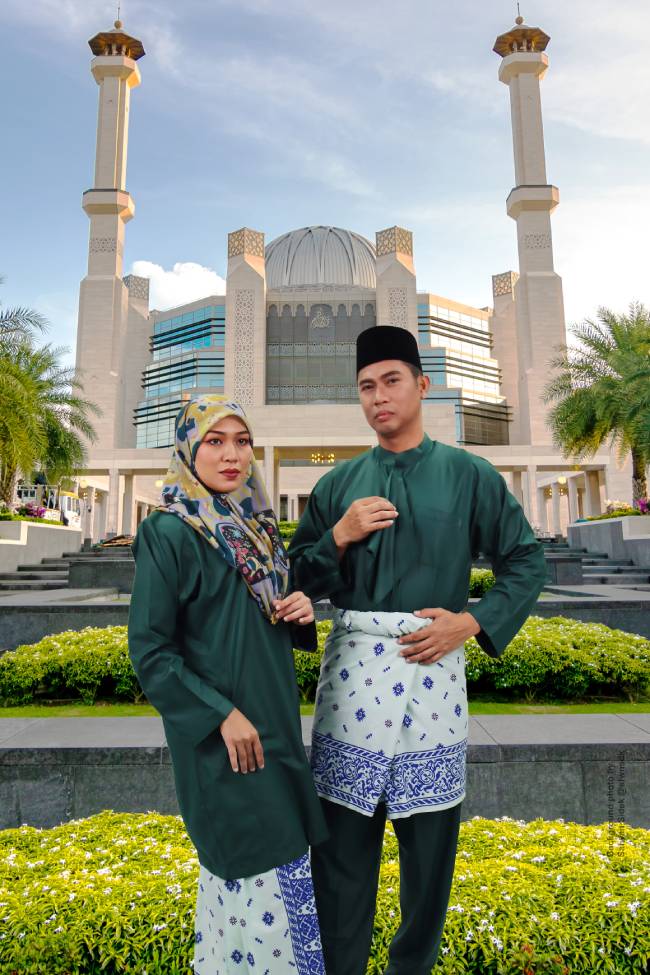Brunei Darussalam's national costume reflects the rich cultural heritage and identity of the Malay society. Consisting of two main types, Baju Melayu for men and Baju Kurung for women, these traditional attires are deeply rooted in the country's customs and Islamic influences.
The Bergulambir style of Baju Melayu is characterized by a collared shirt with long sleeves and long pants. The shirt features three pockets – one at the upper left chest and two at the bottom. A distinctive folded handkerchief, known as gulambir, adorns the neck attached to colar. Complementing the ensemble is a headdress called a songkok and a cloth wrap around the waist, known as kain sinjang. The kain sinjang is often made from hand-woven fabric, displaying traditional Brunei weaving patterns or motifs like kain Si Lubang Bangsi or kain Si Pugut.


Baju Kurung: National Attire for Women
Baju Kurung, the national attire for women, is characterized by a loose, below knee-length shirt with long sleeves and a small round neck. It is typically worn with a long skirt and is often completed with a headscarf known as tudung.
Cultural Significance and Occasions:
Both Baju Melayu and Baju Kurung hold cultural significance and are worn during various events such as weddings, religious ceremonies, official functions, and more. The attire reflects the cultural and religious values of the society and is considered a symbol of national identity.
Influence of Modern Fashion:
While deeply rooted in tradition, the national attire has also experienced influences from modern fashion trends. The costumes have evolved over time, incorporating contemporary styles and fabrics while preserving their cultural essence. This blend of tradition and modernity showcases the dynamic nature of Brunei Darussalam's cultural identity.
In essence, Brunei Darussalam's national costumes serve as more than just garments; they represent a connection to heritage, religious values, and a shared sense of identity, making them an integral part of the country's cultural tapestry.